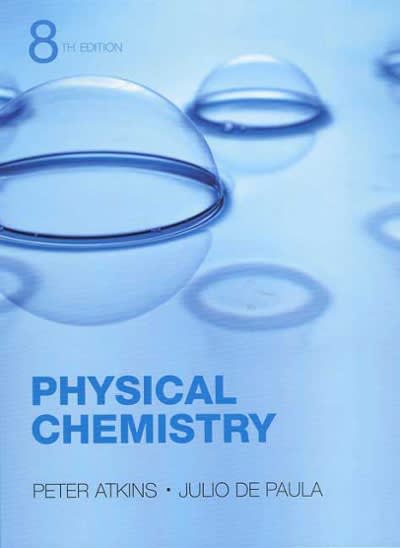The number of photons falling on a sample can be determined by a variety of methods, of
Question:
The number of photons falling on a sample can be determined by a variety of methods, of which the classical one is chemical actinometry. The decomposition of oxalic acid (COOH)2, in the presence of uranyl sulfate, (UO2)SO4, proceeds according to the sequence
(1) UO2+ + hν → (UO2+)*
(2) (UO2+)* + (COOH)2 → UO2+ + H2O + CO2 + CO
with a quantum efficiency of 0.53 at the wavelength used. The amount of oxalic acid remaining after exposure can be determined by titration (with KMnO4) and the extent of decomposition used to find the number of incident photons. In a particular experiment, the actinometry solution consisted of 5.232 g anhydrous oxalic acid, 25.0 cm3 water (together with the uranyl salt). After exposure for 300 s the remaining solution was titrated with 0.212 m KMnO4(aq), and 17.0 cm3 were required for complete oxidation of the remaining oxalic acid. The titration reaction is
2 MnO4 −(aq) + 5 (COOH)2(aq) + 6 H+(aq) → 10 CO2(g) + 8 H2O(l) + 2 Mn2+(aq)
What is the rate of incidence of photons at the wavelength of the experiment? Express the answer in photons/second and einstein/second.
Step by Step Answer:






